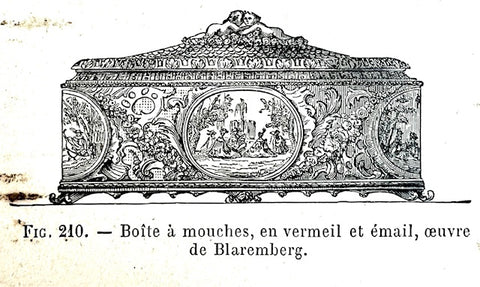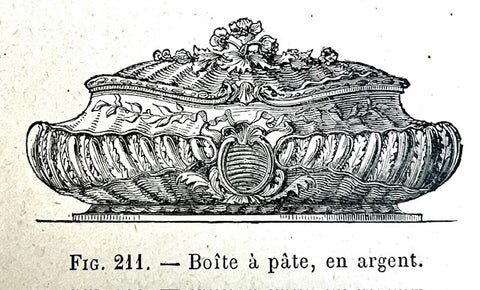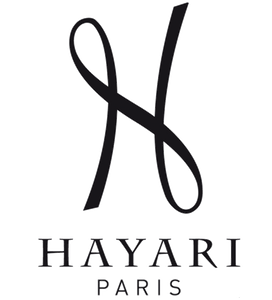Story of perfume through the civilisations Part 3
The evolution of civet and musk perfumes, from the Middle East to the West.
Since then, the use of perfumes has shown a steady progression in line with the rise of luxury. However, it should be noted that our taste has become more refined; the scents of musk and civet, so popular among the elegant of the 16th and 17th centuries, would overwhelm our present-day sensitive individuals, accustomed to lighter and more delicate fragrances. The Orient remains the most renowned country for its love of perfumes; the two most esteemed there are musk and rose. In the paradise of the Middle East, the pavement should be made of musk. Evla Effendi recounts that in Kara-Amed, the capital of Diarbekir, there is a mosque named Iparic, which was built by mixing such a quantity of musk into the mortar that the atmosphere is constantly saturated with it. The Zobeide mosque in Torris was also built with musk, emitting a very strong smell, especially when the sun shines on its most beautiful but partially ruined walls. However, it is the scent of rose that is the most commonly used perfume in the East; it serves various purposes. Effendi mentions that in Kara-Amed, the capital of Diarbekir, there is a mosque named Iparic, which was built with such a large quantity of musk mixed into the mortar that the atmosphere is constantly infused with it. The Zobeide mosque in Tauris was also built with musk and gives off a strong scent, especially when the sun hits its partially ruined walls. However, rose essence is the most commonly used perfume in the East, serving various purposes: it is used to wash the walls of mosques, fashionable women use it for their ablutions, it sprouts in fragrant bursts in palace courtyards, and it is sprinkled on guests as a sign of welcome. The perfume trade is so significant in Constantinople that an entire gallery in the Grand Bazaar is dedicated to it. There, one can find a jumble of golden bottles of rose essence, native pastes and cosmetics, musk and ambergris pastilles, round and flat, coated in a thin layer of gold; jade, coconut, sandalwood beads, etc., incense burners, and intricately carved metal scent balls. The question of perfumes is linked to another frivolity, that of "makeup" that some women use to enhance their beauty or "repair the irreparable damage of years"...But we will not dwell on this, as this practice is fortunately fading away, and we will content ourselves with presenting various artistic trinkets used to store these "paints," "powders," or "beauty spots" (it is known that these black dots applied on the face to imitate "beauty marks"); the container is certainly more valuable than the content.

The significance of flower production in the Grasse region
The trade of natural raw materials used in perfumery has been subject to a very thorough study by Mr. J. Rouché, a chemical engineer; we will extract the information related to native products, which are of particular interest here. Concerning native essences, Grasse, Cannes, Nice, with their climate and flower cultivation, constitute a unique production center in the world, which has so far bestowed French perfumery with its supremacy. In the Alpes-Maritimes department, there are about 40 manufacturers, generating a turnover of 12 million (1920), with 7 to 8 million in exports. They employ 400 male workers and 1000 female workers; there is no unemployment per se, but during the high season from April 15th to May 31st, additional assistance is hired, partly from Italy, estimated at 30%. The average wages are 2.50 francs for men and 1.25 francs for women. Annually, over 5 million flowers are processed (in 1920). With these flowers, they produce 400 tons of scented pomades through enfleurage, 100 tons of scented oils, aromatic waters through distillation (about 4 million liters of rose water and orange blossom water), and essences (2000 kg of neroli, 80 kg of rose essence). 1000 kg of orange blossoms yield 1 kg of neroli; 3000 kg of roses produce 1 kg of essence. Mint is also cultivated in these regions, yielding approximately 4000 kg of essence. There is a significant trade of Labiatae essences in the department. However, these essential oils are only partly produced in Grasse (only 5000 kg of lavender, 3000 kg of thyme); they are distilled in Herault, Gard, Var, Drome, and Basses-Alpes. At the production sites, the plants are processed either in makeshift stills that move through villages and mountains during the two-month season (some manufacturers have up to 30 in operation), or in immense stills capable of processing 2000 kg of lavender in 24 hours, located in fixed factories. 550 kg of flowers yield 1.5 kg of essence. In recent years, the cultivation of aromatic plants, especially geranium, has greatly expanded in Algeria, particularly around Algiers, Staouéli, in the Mitidja Valley. In Boufarik, there are over 500 hectares of geranium, 170 of cassie; neither violet nor orange blossom is neglected. The production of geranium essence exceeds 6000 kg.

DISCREET PERFUMES, LIGHT SCENTS, SUBLIME SMELLS
Italy provides us with iris roots and essences of bergamot, lemon, and Portugal. Iris is cultivated near Florence and Verona. France annually consumes nearly 330 tons of it. Orange and lemon essences are distilled in Calabria, Sicily; exported via Messina, Reggio, Catania, and Palermo; valued at over 8 million francs, with an average quantity of 550 tons, of which nearly 200 are absorbed by England, 178 by North America, 75 by Austria, 50 by France, 25 by Germany, and the remainder by other countries. Producing 1 kg of essence requires about 200 kg of peels, which is equivalent to 2000 fruits. A skilled worker can peel 4000 lemons a day, earning 2.65 francs. Roses come from Bulgaria; we will revisit this later on. Mint and lavender are especially cultivated in England, in Surrey, since 1568. In Mitcham, there are around 350 hectares of mint. During the season, series of stills distill 15,000 kg of plants per day. The importance of these distillation apparatus can be gauged by their coils, which are 35 meters long The development of the perfume industry to the present day has been marked by a continuous evolution, adapting to changing tastes and preferences. Today, the use of fragrances has become more nuanced and sophisticated, catering to individuals with a preference for lighter and more subtle scents compared to the intense musk and civet fragrances favored in previous centuries. In the East, particularly in the Middle East, the love for perfumes, especially musk and rose, remains deeply ingrained. The aroma of musk is so prominent that it is said the very streets in certain cities are saturated with its scent. Rose essence, on the other hand, is a versatile perfume widely used for various purposes, from adorning the walls of mosques to being a welcoming gesture for guests.
The trade of perfumes and essences has a long-standing tradition, with Constantinople serving as a significant center for this commerce. The Grand Bazaar, for instance, houses a variety of fragrant products, from rose essences to musk and ambergris pastilles, all presented in ornate containers. While the use of perfumes is closely linked to the realm of beauty products and cosmetics, the focus has shifted towards more natural and artistic expressions, with attention to the craftsmanship of the containers themselves.
Moving on to the production of flowers in the Grasse region, the cultivation of native plants has played a crucial role in establishing the area as a leading center for perfumery. The Alpes-Maritimes department boasts numerous manufacturers, employing both local and seasonal workers to process millions of flowers annually. Through various methods like enfleurage and distillation, a vast array of scented products are derived, ranging from pomades to aromatic waters and essences. Noteworthy is the meticulous process involved in extracting essences from different flowers, each contributing to the diverse range of perfumes available in the market.
The sourcing of raw materials for perfumery extends beyond the borders of France, encompassing regions like Italy and England. Each country contributes distinct elements like iris roots, citrus essences, and aromatic plants, enriching the palette of scents in the perfume industry. The cultivation and extraction of these natural ingredients require precision and expertise, reflecting the artistry and craftsmanship that characterize modern perfumery.

